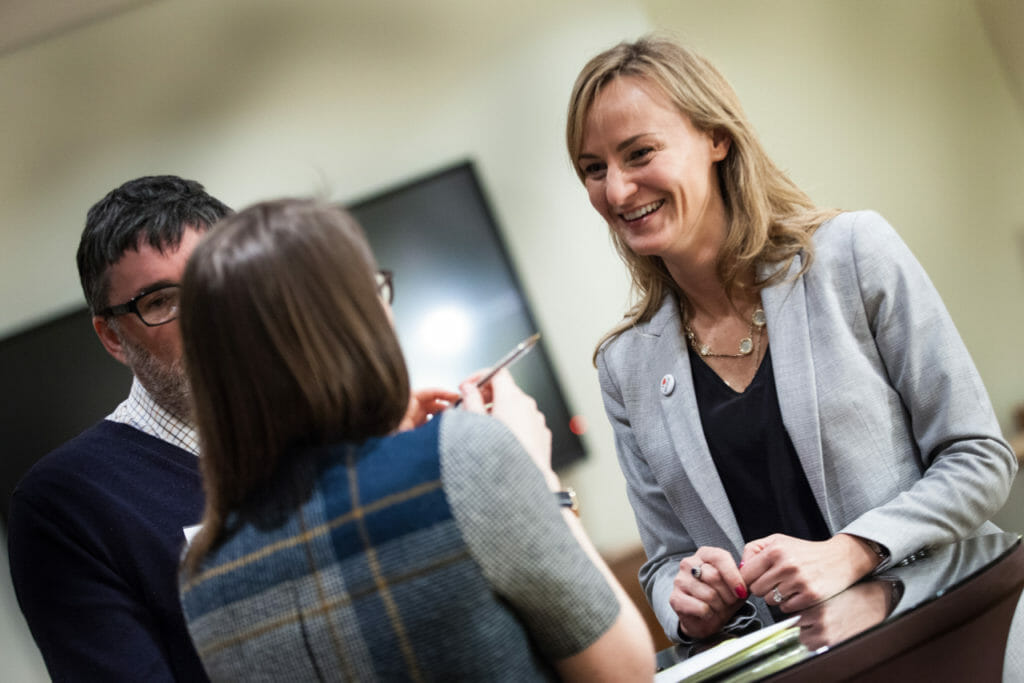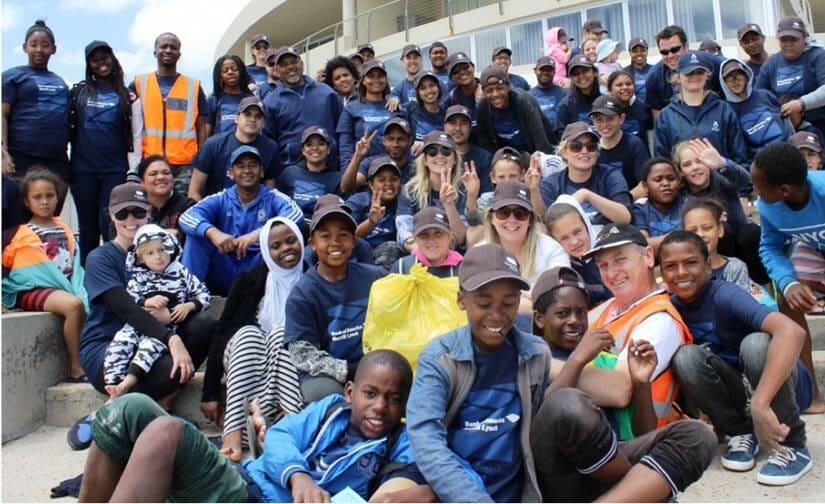Making the Business Case for Employee Volunteering

For companies, building a culture that connects volunteering to a broader organizational mission can require an intentional and sustained effort to engage stakeholders, creating a strong business case and adopting policies and programs supportive of service. Increasingly, leaders in corporate citizenship are building the skill set and experience to translate the importance of engaging employees in service to the vernacular of an executive boardroom. To provide some best practices for companies trying to build volunteer programs, Jenny Lawson, president of networks at Points of Light, and Hannah Christie, environmental, social and governance project manager EMEA at Bank of America Merrill Lynch, lay out some of the foundational facts that employee volunteer leaders can use to strengthen their case.
Engagement
Jenny: Whether it’s cleaning up community parks or mentoring a student online; giving pro bono time to a nonprofit in need or hands-on hours to a food bank; volunteering for an hour in your hometown or for a multi-week assignment cross-border, volunteering is a great way to engage individuals of all ages, interests and backgrounds to unite around a common goal. At the same time, we’ve also seen that companies with volunteer programs realize more than $2,400 of value per volunteer resulting from decreased turnover and improved performance, and that different motivations drive employees to volunteer. How is that happening at Bank of America Merrill Lynch?
Hannah: At Bank of America Merrill Lynch, we generate value for the community by matching capital investment from the Bank of America Charitable Foundation with the investment of our time and expertise. We’ve learned that creating value for the community, in turn, helps create value for the business. For example, our International Coastal Cleanup, Habitat for Humanity Global Build Week and World Food Day initiatives give employees the opportunity to build their networks, have fun with colleagues and make a positive impact on their local community. Our professional skill share programs bring a different aspect of engagement as they give our employees the opportunity to view their professional skills through a new social lens, making a long-term and often wide-ranging positive impact. Throughout all parts of our volunteer program, we seek to generate engagement by helping employees expand their networks, build skills and feel good about giving back to the community.
Leadership Skills
Jenny: A culture that supports volunteering can also help a company develop leaders from within, as research has shown. From organizing peers, working across internal silos, building external relationships, managing projects and more – participating in corporate volunteering can build important skills and relationships. How do you build that value in your programs?
Hannah: This is a great example of how an employee volunteering program brings benefits to everyone involved. In a highly competitive hiring environment, connecting to purpose and volunteering can increase employee retention and productivity which reduces costs associated with turnover. We work closely with HR to develop and integrate our charity skill share program with the bank’s learning and development offerings to employees. From our summer interns through to senior management, sharing time and skills plays a key role in career progression. For example, in December 2016 we launched Inspiring Governance in the U.K. with our partner charity, Education and Employers, giving employees the opportunity to build their leadership experience, influencing and negotiation skills.

Connecting and Recognizing Colleagues
Jenny: Every workplace is looking at the latest science on health and employee well-being. In fact, research on social neuroscience shows that the emotional connection made when we give back and volunteer releases “feel-good” hormones such as serotonin, oxytocin, endorphins, and dopamine. This emotional win-win further connects people to community and co-workers. As a global enterprise, how do you build that camaraderie and sense of shared experience?
Hannah: Working at a global company, the employee volunteer program is a great way to connect our approximately 200,000 employees who work with clients and stakeholders in 90 countries around the world. In April each year, we hold Global Service Month as a way to connect employees around the world and celebrate the impact of volunteering in the community. This year, you will see a lot of them sharing their stories on social media through #BofAVolunteers. Additionally, we run our internal Global Volunteer Awards to celebrate teammates who go above and beyond in their support of the community. We also run a Volunteer Grants program in support of our colleague’s volunteer efforts. By recognizing our people’s achievements with community partners, we are able to double the ‘feel good’ effect of volunteering and the engagement it brings.
For more information on the business case for employee volunteering, register for the Conference on Employee Volunteer Engagement in Paris, France, on April 25, 2017, and explore the Points of Light Corporate Institute’s online resources. You can also join Points of Light, Bank of America, and other nonprofit, corporate, and government changemakers at the Conference on Volunteering and Service in Seattle from June 19-21. For more information on Bank of America Merrill Lynch’s environmental, social and governance efforts – visit their ESG webpage.